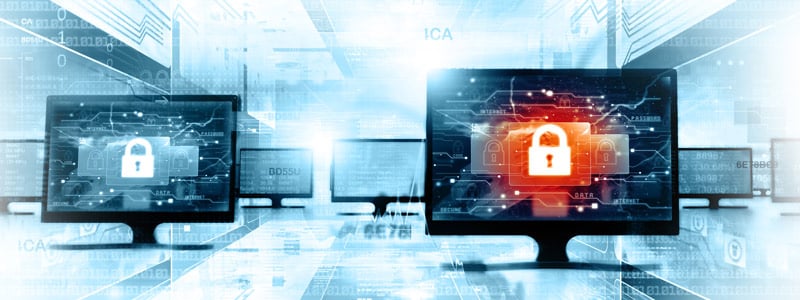Maximize Your Approach to Cybersecurity Through Real-Time and Continuous Monitoring
 What is Cybersecurity?
What is Cybersecurity?
Cybersecurity, also known as computer security or IT security, is the protection of information systems from theft or damage to hardware, software, and the information residing on them or that can be accessed from them. Cybersecurity also protects against attempts to prevent disruption or misdirection of the services that information systems provide.
Why is Cybersecurity Important?
If you’ve ever set up a home security system, you probably did so to prevent people from breaking in and damaging or stealing your stuff or causing injury to you or your loved ones. Damaged or stolen items are expensive or impossible to replace. Injury can have a lasting impact to those injured and their loved ones.
Similarly, you don’t want someone breaking (hacking) into your cyber world. The expense associated with ruined or stolen hardware or software, and the impact of being hacked, can have significant impact on your personal or company image. If the data stolen includes such things as bank account numbers, credit card information, passwords, or government ID numbers, it isn’t hard to see how broad and devastating the damage could be.
Information can be stolen through malicious code run on devices with a vulnerable operating system or application. One of the most problematic elements of cybersecurity is the continually evolving nature of security risks. The traditional approach to security has been to focus resources on crucial system components and protect against the biggest known threats, which meant leaving components undefended and not protecting systems against less dangerous risks. Organizations should have a plan and tools for preventing and mitigating cyber-attacks from every possible system.
Sounds Daunting. Is it Hard to Implement?
Getting started can be as easy as Discover, Evaluate, and Remediate. Let’s take a look at each of these.
Discover
Ideally, IT would know about every device running on their corporate network. In reality, the larger a company grows, the more likely they will have devices on the network that people have forgotten about or that employees have recently added without following proper protocol (Shadow IT). Because of this, continual active and passive monitoring of the network is critical in order to identify devices that are unknown and likely unmanaged. Not only is it important to know about the device, but more importantly you must know about the OS and applications each device is running—and the version or patch level each is currently running.
Evaluate
Once you know about all of the devices and applications running on your network, it’s important to have a quick and simple (and continual) way of knowing if they introduce risk to your company. When the device doesn’t have the latest OS or application update, it could be vulnerable to malicious attacks. Quick and continuous scanning to provide this information is key.
Remediate
Now that you know where your risk is, it’s time to remediate the risk. Choosing the right remediation tool can save you time and headaches. Whether you’re self-governed or require planning and oversight by a change control board, your tool should give you the flexibility to work quickly as well as the ability to set automated workflows. To avoid problems with the network engineers, it’s also crucial that patches are deployed in a bandwidth-friendly way.
A Word about Applications and Real-time Assessments
Many IT organizations feel that they are being mostly protected if they keep their servers and endpoints up to date with the latest OS patches. The reality is that there are more vulnerabilities in applications than in operating systems. A good strategy for managing applications is crucial. Monitoring the software you have in your environment means more than just knowing what’s installed. It means:
- Knowing what applications are being run and by whom
- Removing software from systems or users who don’t need it or don’t have license to use it
- Controlling who gets to run which applications and when and where they can be run
In today’s cybersecurity landscape, advisory organizations are promoting a more proactive and adaptive approach. Continuous monitoring and real-time assessments of user and application behavior is crucial to your cybersecurity plan.
